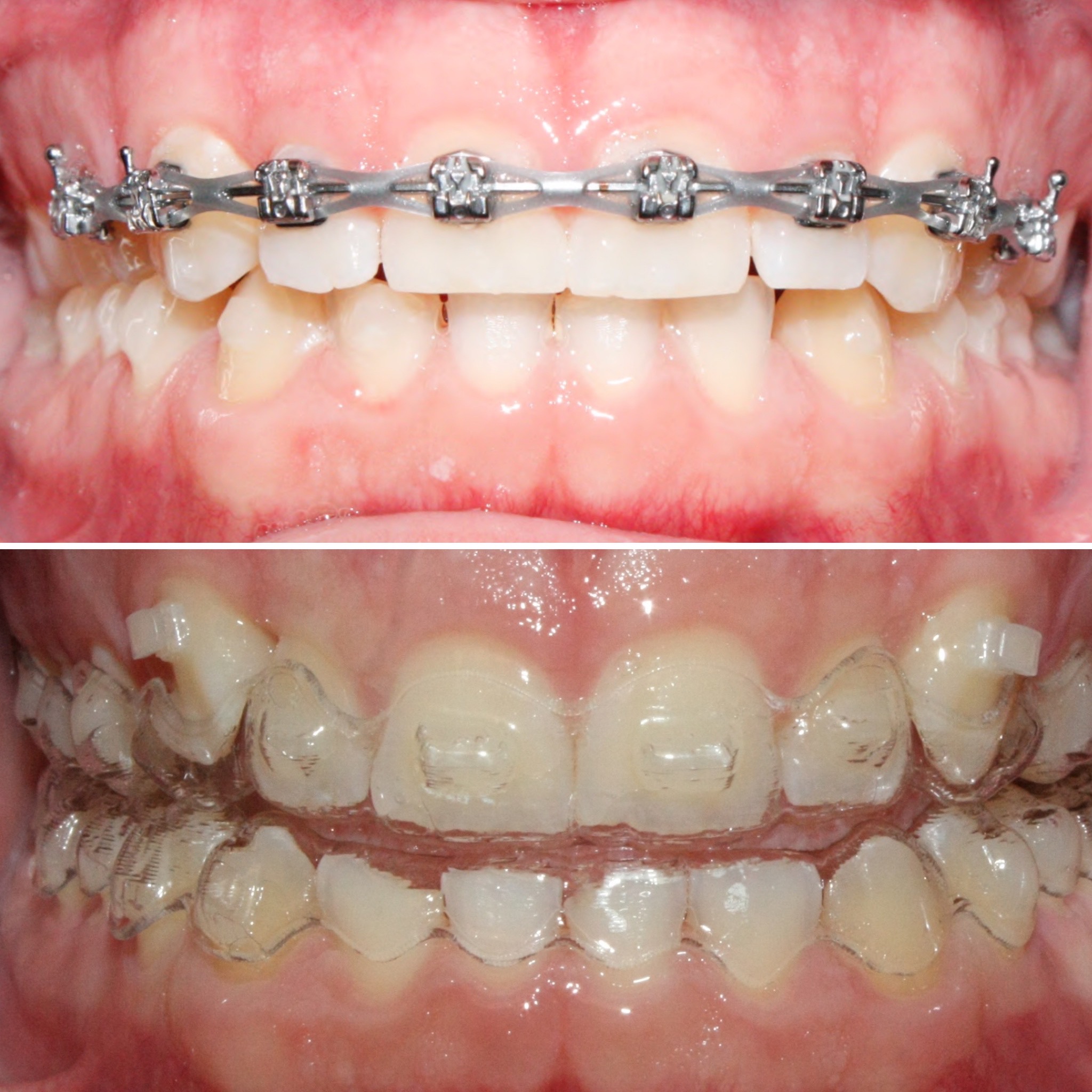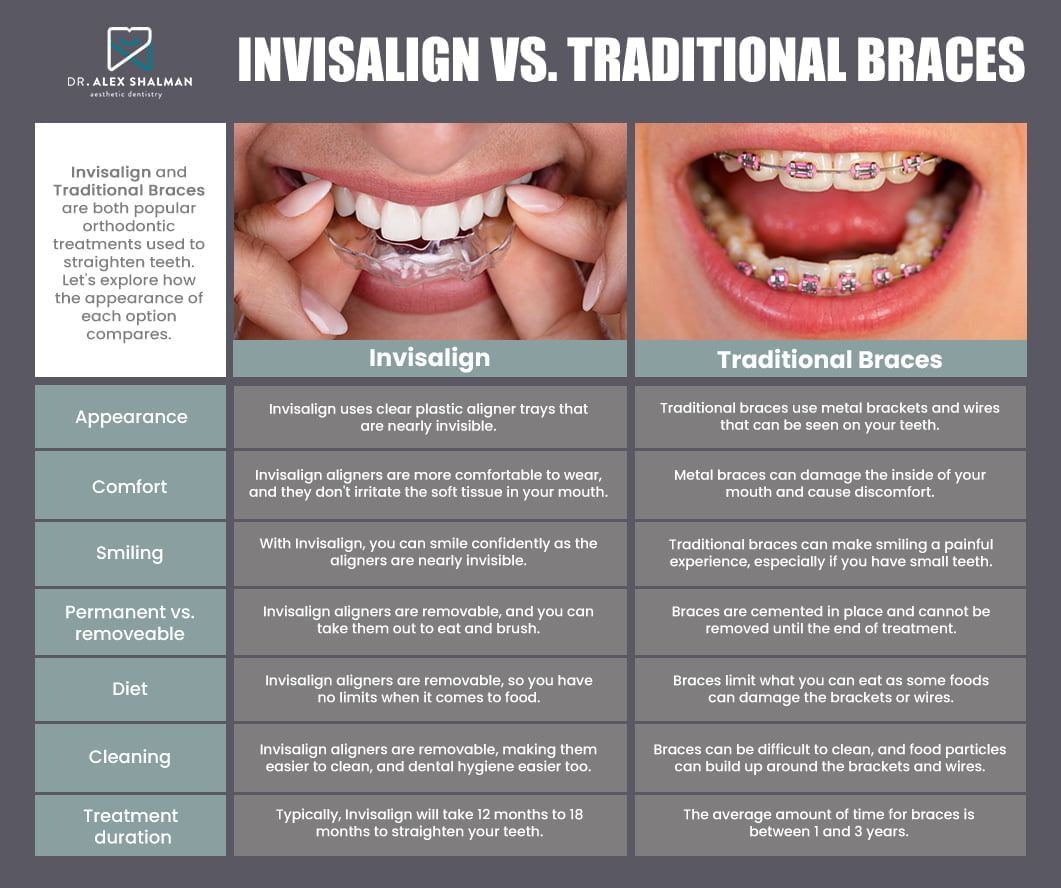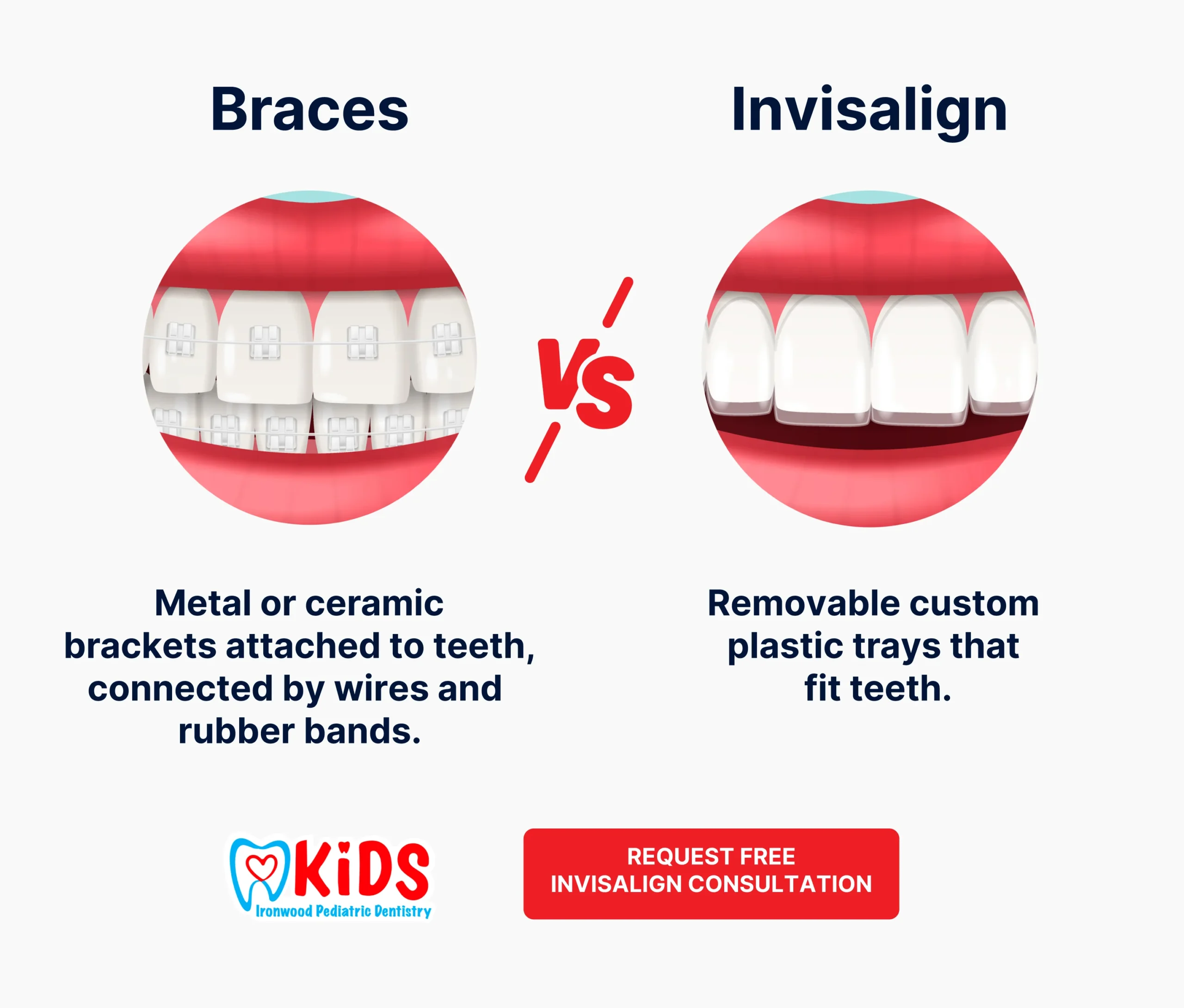Invisalign for Teens: A Modern Solution to Straightening Young Smiles
Invisalign for Teens: A Modern Solution to Straightening Young Smiles
Blog Article
Invisalign vs. Typical Dental braces: Which Alternative Is Right for You?
When considering orthodontic therapy, the option between Invisalign and conventional braces offers numerous essential elements that warrant cautious assessment. Invisalign provides a very discreet choice with removable aligners, while typical dental braces supply a much more noticeable yet reliable service for severe misalignment.
Overview of Therapy Options

On the other hand, conventional dental braces are composed of steel brackets and cables that are adhered to the teeth. This method applies continual stress over time to accomplish placement. While effective for complicated orthodontic concerns, typical braces need routine gos to for modifications and can posture challenges in preserving oral health as a result of the difficulty of cleansing about cables and braces.
Both choices have their values, and the selection frequently hinges on particular oral problems, way of living choices, and patient compliance. Ultimately, seeking advice from an orthodontic expert is vital for establishing one of the most appropriate treatment plan tailored to individual needs. Understanding the nuances of each option can considerably influence the overall success of orthodontic treatment.
Visual Factors To Consider
A substantial variable affecting the option between Invisalign and conventional braces is the aesthetic appeal each treatment provides. Invisalign aligners are crafted from clear plastic, making them virtually invisible when worn. This very discreet look is specifically appealing to teens and adults that may really feel uneasy concerning their orthodontic therapy. The capacity to preserve an all-natural smile throughout the placement procedure can considerably enhance the patient's self-confidence in social and expert setups.
On the other hand, typical dental braces contain steel brackets and cords, which can be much more recognizable. While improvements in orthodontic technology have actually led to the advancement of smaller sized brackets and tinted elastics, conventional dental braces still maintain an even more conspicuous profile. For some people, the visibility of dental braces might hinder them from looking for needed therapy.
Inevitably, the selection in between Invisalign and conventional dental braces may depend upon individual preferences relating to aesthetic appeals. Patients who focus on discernment frequently favor Invisalign, while those that are less concerned regarding presence may choose for standard braces. Understanding the aesthetic ramifications of each alternative is essential for making a notified choice that straightens with one's lifestyle and preferences.
Convenience and Convenience

In regards to ease, Invisalign aligners are detachable, allowing clients to appreciate their favored foods without limitation and maintain optimum oral hygiene. Cleaning and flossing are streamlined, as the aligners can be gotten throughout these regimens, whereas traditional dental braces call for mindful navigating around brackets and cords.
In contrast, typical braces demand regular modifications, making them much less practical for those with active schedules. In general, the convenience and convenience of Invisalign make it an attractive option for many individuals seeking orthodontic therapy.
Treatment Period and Performance
While both Invisalign and conventional dental braces are effective in fixing dental misalignments, the duration advice of treatment can differ significantly between the 2 options. Typically, Invisalign treatment can take anywhere from 12 to 18 months, relying on the intricacy of the instance. The clear aligners work by gradually moving teeth right into their wanted placements, and normal follow-ups with an orthodontist help guarantee progress stays on the right track.
In comparison, typical dental braces frequently require a longer commitment, usually ranging from 18 months to three years. This is due to their fixed nature and making use of wires and brackets, which can be more efficient for complex situations and severe misalignments (Invisalign). The treatment effectiveness of standard dental braces is well-documented, as they permit precise modifications and greater control over tooth activity
Eventually, the choice between Invisalign and traditional dental braces may hinge on both the anticipated treatment period and the specific oral issues handy. Consulting with an orthodontist is crucial, as they can offer tailored suggestions based upon individual demands, making sure the selected technique lines up with preferred results and durations.
Price Comparison and Insurance Policy Options
Cost plays a substantial duty in the decision-making procedure for individuals taking into consideration orthodontic treatment, whether choosing Invisalign or conventional dental braces. Generally, the cost of Invisalign navigate to these guys arrays from $3,000 to $8,000, while conventional braces typically cost between $2,000 and $6,000. Variables influencing these expenses consist of the intricacy of the situation, the duration of treatment, and geographical location.
Insurance coverage can substantially influence out-of-pocket expenditures. Lots of oral insurance plans provide partial protection for orthodontic treatments, yet the specifics can differ commonly. It is vital for people to evaluate their insurance plan to figure out the extent of coverage for either choice. Usually, standard braces might be a lot more often covered by insurance coverage plans compared to Invisalign, which some insurance firms categorize as a cosmetic treatment.
Additionally, numerous orthodontic methods provide versatile layaway plan, making both treatment alternatives much more obtainable. Individuals should ask about prospective financing choices and discount rates for upfront repayments. Assessing the complete cost, including insurance policy benefits and layaway plan, is essential for making an informed decision that lines up with both aesthetic choices and budget factors to consider.

Final Thought
In summary, the choice in between Invisalign and conventional braces rests on multiple aspects, consisting of aesthetic choices, convenience, therapy duration, and cost. Invisalign uses a discreet, removable alternative that helps with dental hygiene and nutritional adaptability, while conventional braces may be preferable for complicated oral problems and frequently come at a lower price point. Inevitably, assessment with an orthodontist is important to assess private scenarios and figure out the most ideal therapy option for attaining optimal dental alignment.
When considering orthodontic therapy, the choice between Invisalign and standard dental braces provides numerous vital factors that warrant careful assessment.Comparing Invisalign and standard braces exposes distinctive treatment alternatives for orthodontic improvement.While both Invisalign and traditional dental braces are reliable in dealing with oral imbalances, the duration of therapy can differ substantially in between the two options.Cost plays a considerable role in the decision-making procedure for individuals taking into consideration orthodontic therapy, whether deciding for Invisalign or standard braces.In summary, the option between Invisalign and traditional dental braces pivots on several elements, consisting of visual choices, convenience, therapy period, and cost.
Report this page